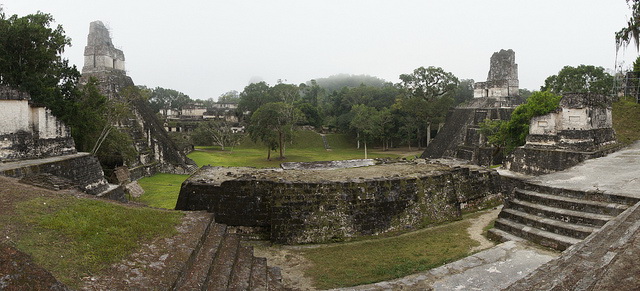Tikal’s excavation works were largely done in strong collaboration with the University of Pennsylvania Museum of Archaeology and Anthropology.
Before any excavation of the main building, trial excavations were done in minor buildings far away from the main ceremonial site.
The University of Pennsylvania started its Tikal Project in 1956. The first temple to work on was the temple I.
There were many notable archaeologists who worked on Tikal, but most notable is William R. Coe who worked on the project from its inception until his retirement in 1987.
His methodical approach to cataloging and photographing the Tikal finds proved invaluable as their numbers mounted during more than a decade of investigations, and his own excavations were among the best ever carried out in that testing jungle environment, where tree roots penetrated to amazing depths, tearing the ancient buildings apart.
The most impressive excavation was Coe’s trench through the Tikal North Acropolis, where a millennium and a half of occupation had left hundreds of plaster floors, limestone walls, bodies of rubble fill, and intrusive tomb chambers and ritual offerings both superimposed and interpenetrating.

The Mayan practice of almost demolishing a building before using its remains as the core for a new and usually larger structure posed numerous problems of dating and interpretation: Coe’s massive drawn section through the North Acropolis is probably the largest and most complex piece of archaeological recording ever executed in the Mayan area.
The North Acropolis proved to have been the dynastic mausoleum of Tikal’s rulers for several centuries, and their tombs and the monuments that lined the Great Plaza in front of the acropolis allowed the city’s history to be elucidated in a detail hitherto unmatched.
Coe’s section was part of an impressive six-volume report, issued in 1990 as part of the published documentation of Tikal’s archaeology, still in progress.
The massive scale of the Tikal investigation and restoration, and the large number of archaeologists trained there under Coe’s directorship, greatly influenced the scholarly and public perception of Mayan archaeology for decades after the work was completed.
In 1970 the site and the entire collection of artifacts were formally turned over to the National Institute of Anthropology and History in Guatemala which manages the works in the area to this day.
